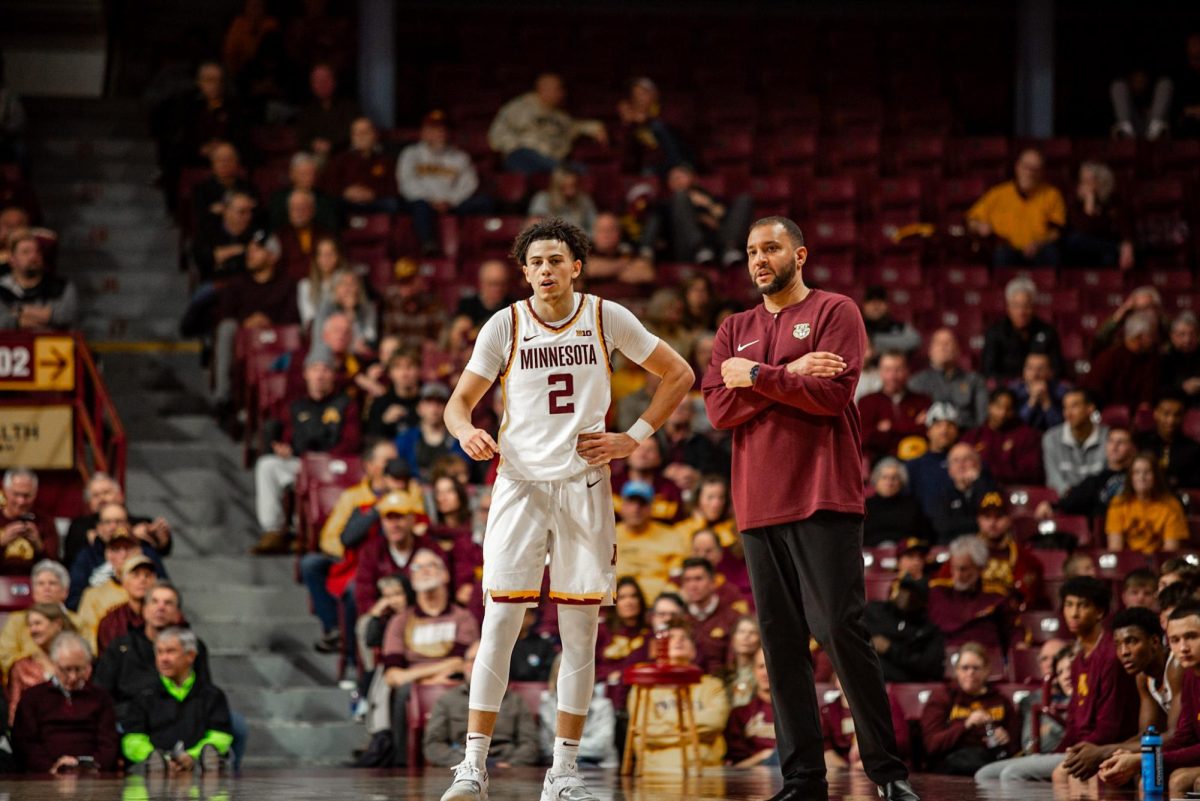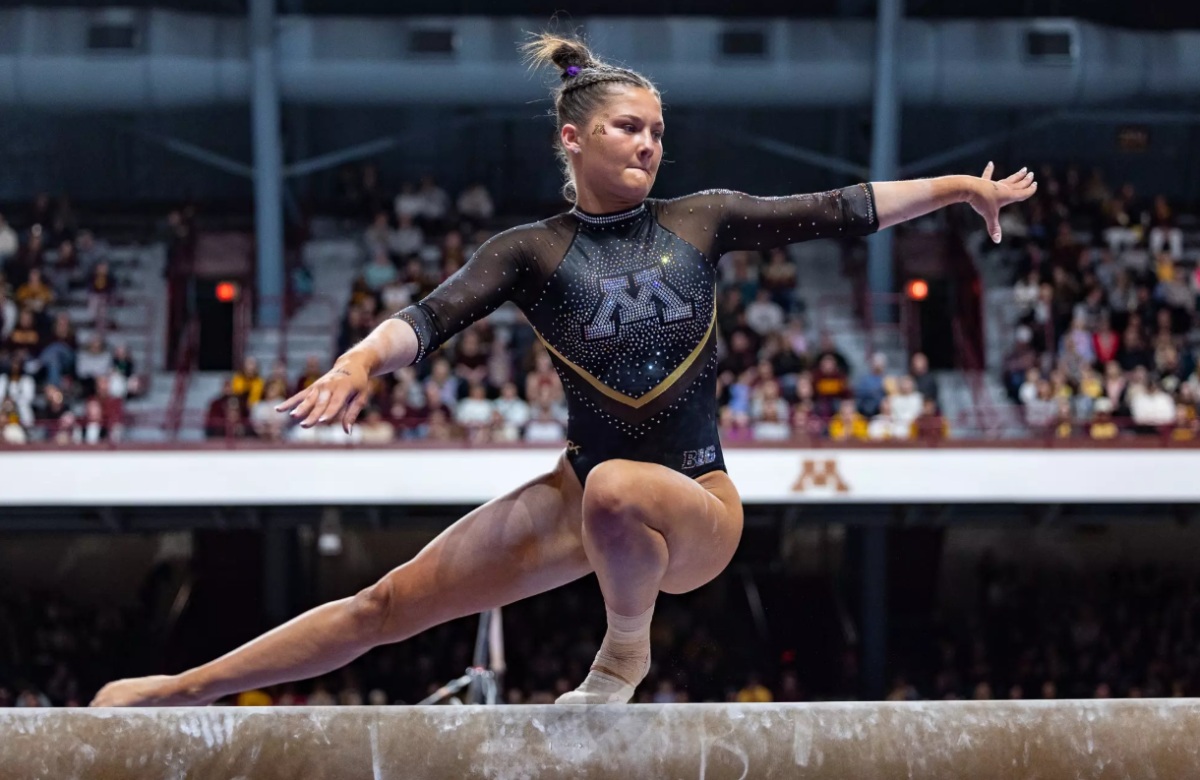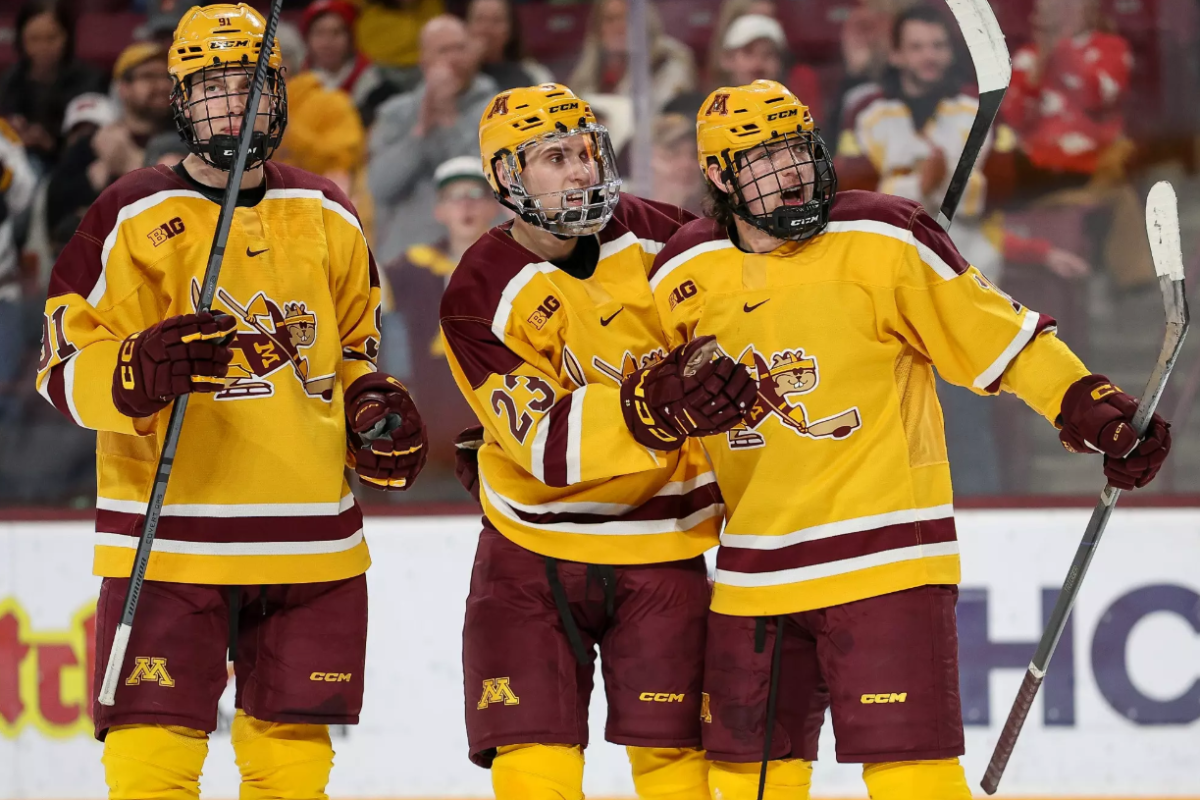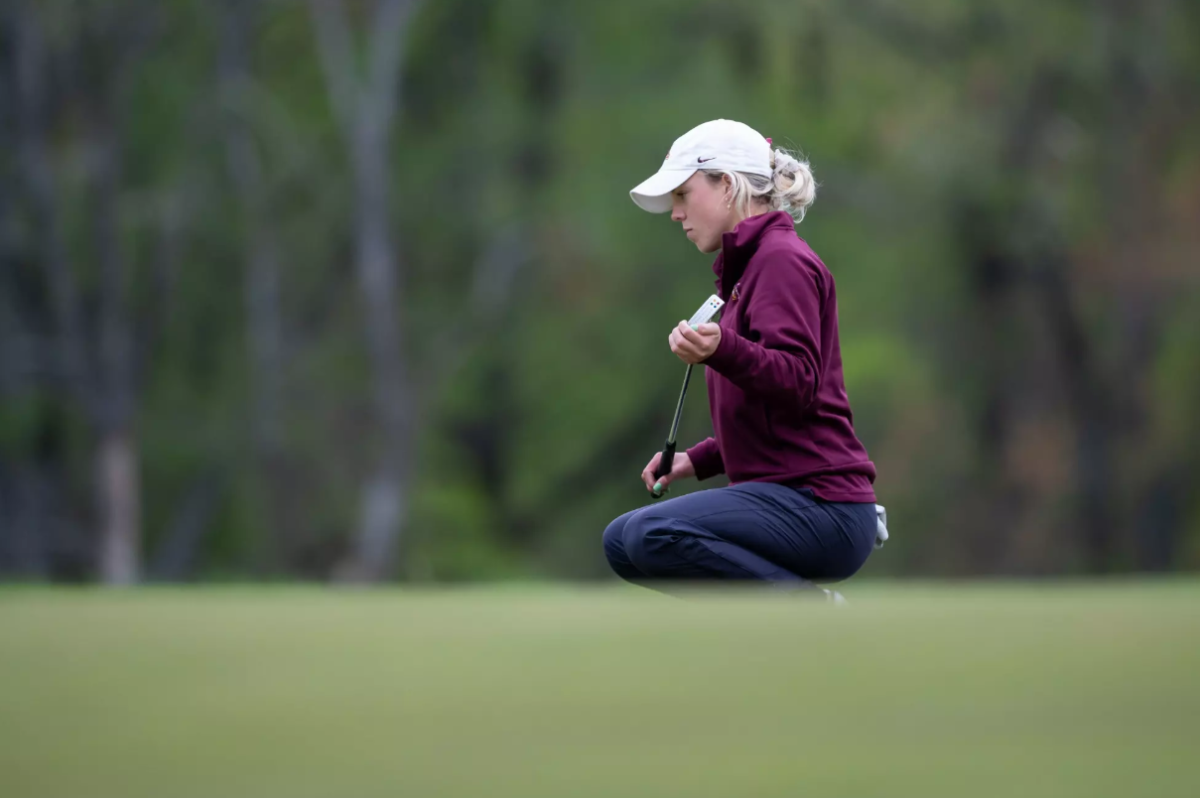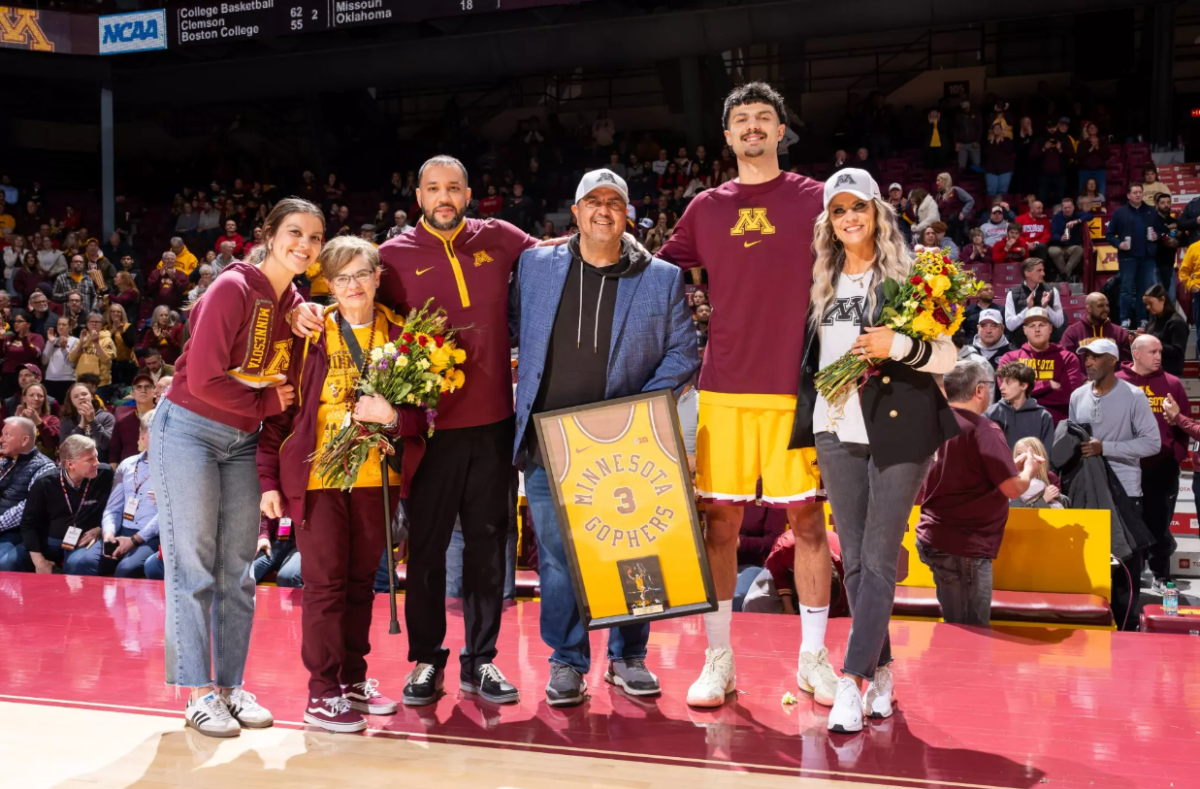With Laurence Maroney less than a week away from more than likely being selected in the first round of the NFL draft, 1,413 of the 3,198 rushing yards gained by Minnesota’s football team last season will be departing the program with him.
And because Gary Russell has enrolled in a junior college, trying to regain eligibility for the fall, it is still uncertain whether another 1,000-yard runner will be subtracted from the Gophers backfield next season.
While there seems to be concern over who is going to get the bulk of the carries next season if Russell is still academically ineligible, there shouldn’t be. Amir Pinnix, who will be a junior next season, is more than capable of being the Gophers every-down back.
Even though he missed most of this spring’s practice sessions with a sprained ankle, Pinnix already has proved himself capable of becoming the next in a long line of successful Minnesota running backs.
In the one game of his college career in which he was handed a substantial workload, Pinnix delivered.
Against Michigan State last season, with Maroney out with an ankle sprain and Russell injured in the middle of the game, Pinnix was the lone running back for the Gophers offense. He carried the ball 32 times, gained 206 yards and scored a touchdown, earning Big Ten Offensive Player of the Week honors.
Even before then Pinnix had shown flashes of having the aptitude to be Minnesota’s No. 1 option at running back.
Spring practice of 2005 saw Pinnix and Russell vying for the No. 2 ball-carrier spot behind Maroney. While Russell eventually won the role, it wasn’t a landslide by any means, as Pinnix showed good vision, speed and quickness throughout spring drills.
When he got carries late in Minnesota’s opening-game blowout win over Toledo in 2004, Pinnix showed the same skills, plus the ability to make tacklers miss as he totaled 88 yards on 17 carries.
Pinnix is not the straight-ahead, push-the-pile type of runner Russell is, but with next season’s offensive line, Pinnix’s style is more beneficial.
Four-fifths of last year’s first-string line will be lost to graduation. The one returnee, Tony Brinkhaus, has shifted from right tackle to center.
Gone are All-Americans Greg Eslinger and Mark Setterstrom. There aren’t going to be the big holes and downfield blocks that were so common over the past few seasons – at least early on as the line tries to develop continuity. That means Pinnix, with the ability to make his own holes, cut-back capability and jukes that can make defenders miss in the open field is going to be a more valuable quantity next season.
Even if Russell can return next season, Pinnix should be the Gophers’ top running back. Russell hasn’t shown the ability to create something when the blocking isn’t there.
There has been some question as to whether Pinnix would be able to get tough short yards if he isn’t running in tandem with Russell. But fullback Justin Valentine already has been used in short yardage situations and, although not as dependable or explosive as Russell, he has shown he can get one or two yards when it’s needed.
Others have doubted whether Pinnix can carry the ball 30 times a game in the run-oriented Minnesota offense. But already this spring there have been indications that the Gophers aren’t going to run the ball as much, and will rely more on the arm of Bryan Cupito.
There isn’t any need to panic if Gary Russell can’t get the grades necessary to play running back for Minnesota next season. The only reason the best runner in the Gophers backfield didn’t play most of this spring was because of a sprained ankle.
– Matt Anderson welcomes comments at [email protected].


